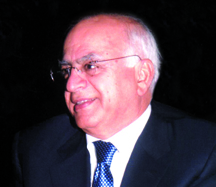Heading back into past
astudy entitled ‘how islamic movements in society ruled through their control of education’ was carried out by the american-syrian colleague imad boudouh. there are many facts that should be highlighted in order to pay attention to our government and to eliminate those backward ideas in the education system since we can describe our situation as miserable.
with the collapse of the ottoman empire, europe sought to establish a number of schools in arab countries, boudouh said. he added the europeans also allowed local communities to establish their schools such as the franciscans, frères, jesuits, al-mahaba, and the lakes schools, in addition to the jewish schools.
arab countries have known modern education through these schools. with the decline of the role of foreign schools, the religious schools emerged and expanded during the mandated period, and their levels were distinctive, especially in the scientific and cultural levels, languages, arts and sports, therefore the high class families were keen to register their children in these schools.
such distinction continued until after the independence, and many of the leaders who have had influence on the life of their communities for a century had graduated from these schools.
under the military regimes, which came to power in the second half of the 20th century, these schools were nationalized and their role declined, and with the religious awakening, religious schools began to emerge and those who did not have enough marks to enroll in public schools or those who did not want their daughters to go there for fear of corruption resorted to these schools.
in damascus, the schools of qubaisiyat appeared in the name of its owner establishment, which with time and support of the muslim brotherhood ran half of the private schools. similar schools have been established in north africa, jordan and elsewhere and succeeded in prevailing due to the successful reconciliation between the islamic preaching and the lucrative commercial business, with 2,500 schools in algeria.
in egypt, the situation was the result of educational disaster. al-azhar had two million students in different stages before the university was established, half a million after it, and 10,000 educational institutions.
in turkey, the budget for islamic secondary education will reach $2 billion by the end of 2018. the number of students in the intermediate schools reached 1.3 million in 4,000 schools. the government support for these schools has not improved their output, so turkey has dropped eight places in the academic performance survey in science and mathematics over the last three years, ranking 50 out of 72 countries. fatahullah gulan had the lead over erdogan in exploiting islam politically in order to gain power.
the story of pakistan is no different from the rest of the muslim countries. the foreign schools were nationalized in the 1970s, the level of education dropped, and the taleban launched their quranic schools. most governments in the gulf and arab countries have also ignored the increasing establishment of religious schools and the huge changes in the curricula of public schools, leaving education behind them, and we have reached the bottom of the list of excellence in education.
the decline resulted from the role played by the governments in this regard because of either encouraging or ignoring the establishment of religious schools that pay more attention to the appearance or a person such as the hijab and the beard and the mark of prayer on the forehead, and the most appropriate supplications in every movement or behavior, and see small boys and girls reciting surah (chapters) from the holy quran hundreds of times without thinking, stopping teaching the arts and considering it as taboo, and not paying enough attention to sports.
most of these schools supervisors were content with the authorities of their countries, which allowed them to work on the islamization of society. these apparent religious movements have succeeded so far in controlling society and reducing the level of culture and the desire to increase knowledge and change the appearance and clothing of the sons and daughters of these countries.
the comparison between the form of society today and what was the situation fifty years ago shows this difference cynically; such as a girl who appears in hijab while her grandmother dressed in shorts, or the university lecture room full of veiled students today, while the same room full of strong, confident, liberal women a few decades ago.
the islamic political and social movements have already succeeded in dragging the muslim countries back into the past.






